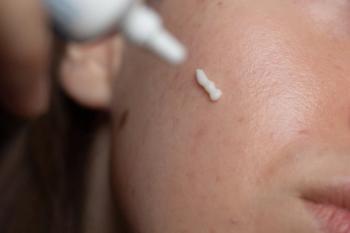
A Clinician’s Perspective of RAD 2025: Part 2
Key Takeaways
- Improved diagnostic recognition and treatment strategies for topical steroid withdrawal syndrome were emphasized, favoring biologics and JAK inhibitors over systemic corticosteroids.
- The conference highlighted the importance of distinguishing between allergies and atopic dermatitis in patient evaluation and counseling.
At RAD 2025, Maureen Offiah, MD, reflected on the sessions she felt were the most impactful as an attendee.
“Something that I found very interesting and insightful was the session on topical steroid withdrawal syndrome. That's something that I think at the end of the session, everyone who attended it should be able to recognize it a lot more easily, be able to diagnose it, and be able to treat it effectively,” said Maureen Offiah, MD, in an interview with Dermatology Times.
Offiah, a board-certified dermatologist at Hattiesburg Clinic in Mississippi, attended the
Offiah first described the session on topical steroid withdrawal (TSW) as impactful, noting improved diagnostic recognition and appropriate therapeutic strategies as a major outcome for attendees. She stressed the importance of avoiding systemic corticosteroids in these patients despite the draw of their fast-acting management, and instead emphasized pivoting toward biologics, JAK inhibitors, and non-steroidal topicals for effective management.1
She also discussed the evolving understanding of the role of allergy in AD, reminding clinicians that while overlap exists, not all patients with AD have allergies, nor do all patients with allergies have AD. According to Offiah, this distinction is vital in patient evaluation and counseling.2
A major theme of the meeting, according to Offiah, was a broadening of therapeutic perspectives. Several sessions encouraged clinicians to be open to alternative and complementary therapies, including homeopathy and natural treatments. Although these are not replacements for evidence-based modalities, she sees value in integrating these approaches when appropriate, especially as patients increasingly inquire about them.
Offiah also mentioned emerging biologic therapies, particularly OX40 and OX40 ligand inhibitors, which she noted are showing promise in early clinical trials. She views these agents as potential future pillars in the AD therapeutic landscape. Similarly, chronic hand eczema was explored in greater detail during the meeting—an area she believes will gain traction as terminology and diagnostic clarity evolve.3
Looking ahead, Offiah is excited for research focused on repurposing existing agents for broader dermatologic use and the development of new therapeutics for underserved inflammatory conditions. She specifically mentioned lichen planus, cutaneous lupus, lichen sclerosus, and bullous pemphigoid as high-priority areas needing therapeutic innovation. She also sees hidradenitis suppurativa as a rapidly advancing yet persistently challenging domain.
Offiah described RAD 2025 as an educational event that not only reinforced current AD management strategies but also encouraged clinicians to think more expansively in their therapeutic approach.
References
- Dasilva D, Glick B, Lio P. Understanding topical steroid withdrawal (TSW) in patients with atopic dermatitis (AD). Presented at: 2025 Revolutionizing Atopic Dermatitis Conference; June 6-7, 2025; Nashville, TN.
- Singh AM. Swanson L. Pediatric AD: part 1 & 2. Presented at: 2025 Revolutionizing Atopic Dermatitis Conference; June 6-7, 2025; Nashville, TN.
- Gudjonsson J, Bunick C. Assessing the evidence for OX40-OX40L axis inhibition for the treatment of atopic dermatitis. Presented at: 2025 Revolutionizing Atopic Dermatitis Conference; June 6-7, 2025; Nashville, TN.
Newsletter
Like what you’re reading? Subscribe to Dermatology Times for weekly updates on therapies, innovations, and real-world practice tips.


















